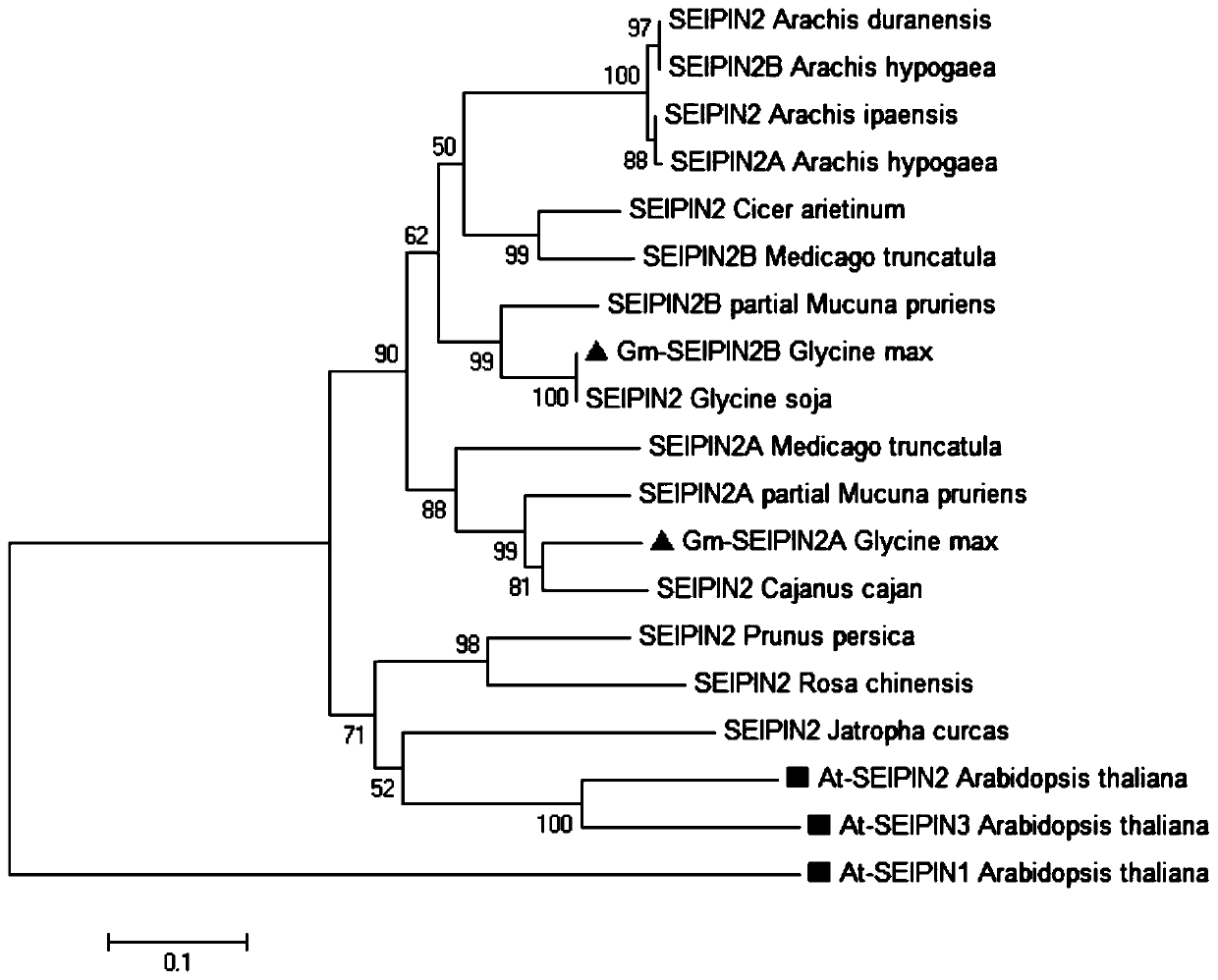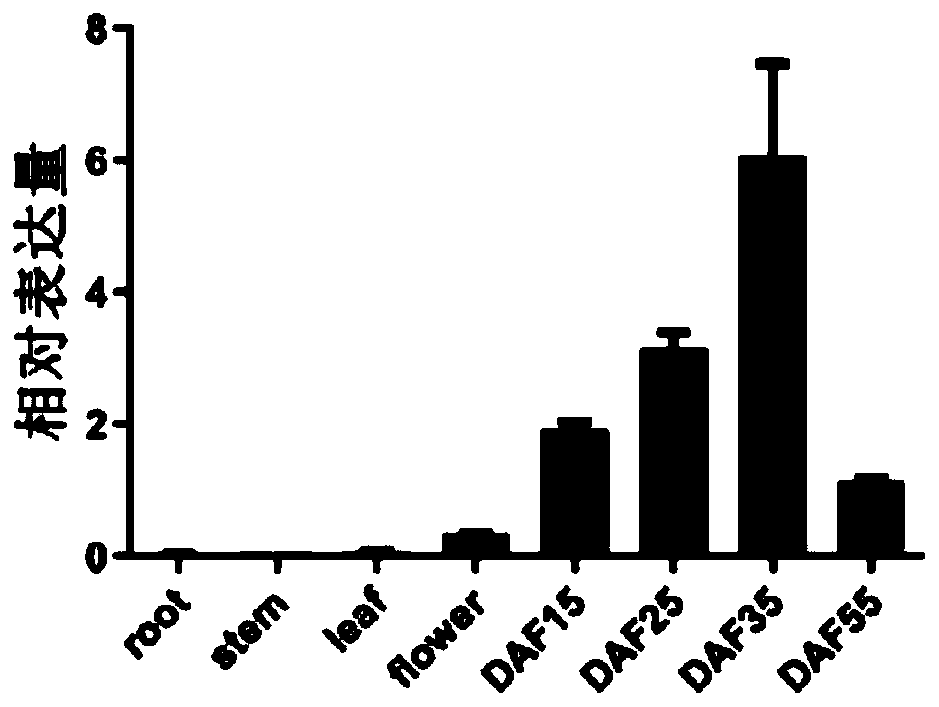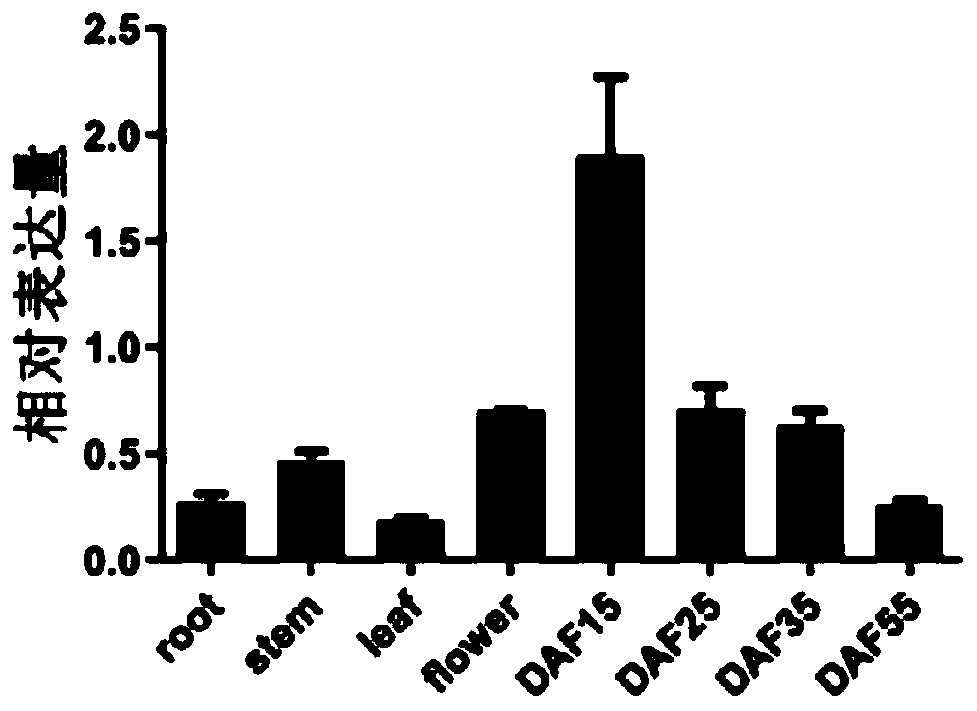Soybean Gm-SEIPIN2 family gene and application thereof in improving oil content of plant seeds
A technology of plant seeds, oil content, applied in the field of genetic engineering
- Summary
- Abstract
- Description
- Claims
- Application Information
AI Technical Summary
Problems solved by technology
Method used
Image
Examples
Embodiment 1
[0034] Embodiment 1, soybean gene Gm-SEIPIN2A and Gm-SEIPIN2B gene phylogenetic tree
[0035] For analysis, input the amino acid sequences of soybean Gm-SEIPIN2A and Gm-SEIPIN2B genes into NCBI for blast, and download the sequences with high amino acid similarity The amino acid sequence of the At-SEIPIN gene was downloaded, and the phylogenetic tree analysis was performed with MEGA7 software. Analysis results (see figure 1 ) shows that Arabidopsis has one SEIPIN1 gene compared to two Gm-SEIPIN2 genes in soybean, but this phenomenon also exists in other crops such as plants such as alfalfa, peanut, pepper, etc.
Embodiment 2
[0036] Example 2, the expression results of Gm-SEIPIN2A and Gm-SEIPIN2B genes in soybean different tissues
[0037] Roots, stems, leaves, flowers and developing seeds were harvested from two soybeans "Williams82" grown in the same natural environment in Jilin University, Changchun City. The above material was collected at various times and immediately frozen in liquid nitrogen and stored at -80°C after processing for RNA extraction.
[0038] The total RNA of the processed material was extracted with reference to the column type plant total RNA extraction and purification kit of Sangon Company, and the integrity of the RNA was detected by 1% agarose electrophoresis. cDNA was synthesized according to Reverse Transcriptase M-MLV (RNase H - ) instructions. Real-time fluorescent quantitative PCR was used to detect the expression of Gm-SEIPIN2A and Gm-SEIPIN2B genes in different soybean tissues and different embryo developmental stages. The experimental operation was carried out ...
Embodiment 3
[0047] Embodiment 3, the cloning of soybean gene Gm-SEIPIN2A and Gm-SEIPIN2B
[0048] Select 3 soybean seeds with full grains, and sow the seeds in the flower soil for potting. The culture conditions are: 16 hours of light, temperature of 26°C, humidity of 65%, light intensity of 30000 lux. Sampling soybean seeds 25 days after flowering, extracting total RNA, reverse transcription into cDNA, designing primers according to the gene sequence published on soybase, the primers are:
[0049]
[0050] Add reaction components according to Table 1, and perform PCR according to the procedure in Table 2:
[0051] Table 1 PCR reaction system
[0052]
[0053] Table 2 PCR program
[0054]
PUM
| Property | Measurement | Unit |
|---|---|---|
| Diameter | aaaaa | aaaaa |
Abstract
Description
Claims
Application Information
 Login to View More
Login to View More - R&D
- Intellectual Property
- Life Sciences
- Materials
- Tech Scout
- Unparalleled Data Quality
- Higher Quality Content
- 60% Fewer Hallucinations
Browse by: Latest US Patents, China's latest patents, Technical Efficacy Thesaurus, Application Domain, Technology Topic, Popular Technical Reports.
© 2025 PatSnap. All rights reserved.Legal|Privacy policy|Modern Slavery Act Transparency Statement|Sitemap|About US| Contact US: help@patsnap.com



